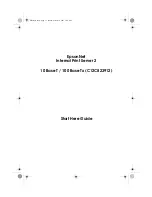
41
• ‘,' (Commas)
Required to separate parameters.
• Bar code status stop code parameter
This is necessary only when the bar code type parameters are ‘0,’ ‘1,’ ‘6’ and ‘7.’
When the bar code type parameters are ‘0,’ ‘1’
‘A’: Sets CODE 128 bar code to code set A.
‘B’: Sets CODE 128 bar code to code set B.
‘C’: Sets CODE 128 bar code to code set C.
When the bar code type parameters are ‘6,’ ‘7’
‘AA’,
‘AB’, ‘AC’, ‘AD’, ‘BA’, ‘BB’, ‘BC’, ‘BD’
‘CA’,
‘CB’, ‘CC’, ‘CD’, ‘DA’, ‘DB’, ‘DC’, ‘DD'
Ex.
‘AB’: Sets the CODABAR (NW-7) start and stop characters to ‘A’ and ‘B.’
Notes:
When bar codes have subscript, that subscript is arranged in a position 24 dots below the
ending Y coordinate specified parameter. If the subscript exceeds the printable range of a card,
it is rejected.
Bar Code Data String
When the bar code type parameters are ‘0’, ‘1’ (CODE 128):
102 characters from chr (&H00) to chr (&H66) are expressed with bar code CODE128. The
table below shows an example of the two characters of a bar code (ASCII).
Ex.
When VisualCard1.Communication ( &h4E, ”100, 170, 1, A, 111213141516”, 0, True );
Expands bar codes of chr (&H11), chr (&H12), chr (&H13), chr (&H14), chr (&H15), chr
(&H16) of the CODE128 code set A with subscript.
Bar Code Data
String
Suffixes by Code Set
Bar Code
Data
ASCII
CODESET A
CODESET B
CODESET C
chr(&H00)
"0 0"
→
" "(SP)
" "(SP)
00
chr(&H01)
"0 1"
→
!
!
01
chr(&H02)
"0 2"
→
”
”
02
chr(&H03)
"0 3"
→
#
#
03
chr(&H04)
"0 4"
→
$
$
04
chr(&H05)
"0 5"
→
%
%
05
chr(&H06)
"0 6"
→
&
&
06
chr(&H07)
"0 7"
→
‘
‘
07
chr(&H08)
"0 8"
→
(
(
08
chr(&H09)
"0 9"
→
)
)
09
chr(&H0A)
"0 A"
→
*
*
10
chr(&H0B)
"0 B"
→
+
+
11
chr(&H0C)
"0 C"
→
,
,
12
chr(&H0D)
"0 D"
→
―
―
13
chr(&H0E)
"0 E"
→
.
.
14
chr(&H0F)
"0 F"
→
/
/
15
















































